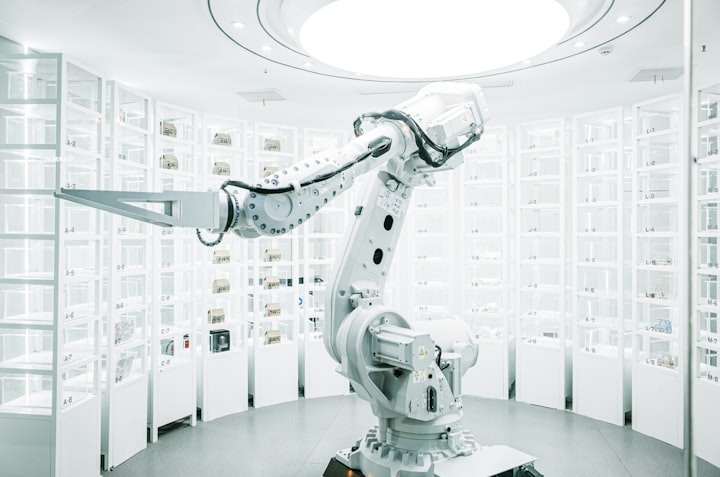Artificial Intelligence and the Rise of Ambient Intelligence
A Seamless Future

The world of technology is constantly evolving, pushing the boundaries of what's possible. Artificial intelligence (AI) has emerged as a transformative force, impacting various aspects of our lives. However, the future lies not just in isolated pockets of AI but in its integration with our surroundings, ushering in the era of Ambient Intelligence (AmI).
Understanding AI: The Power of Machines to Learn
Artificial intelligence refers to the ability of machines to mimic human cognitive functions like learning, problem-solving, and decision-making. AI algorithms are trained on vast amounts of data, enabling them to identify patterns, make predictions, and perform tasks typically requiring human intelligence.
AI has revolutionized numerous fields, from facial recognition technology to self-driving cars. Virtual assistants like Siri and Alexa are prime examples of AI in everyday life, responding to voice commands and completing tasks. However, AI currently operates in a somewhat siloed manner, requiring specific user interaction or existing within designated applications.
Ambient Intelligence: Blending the Physical and Digital
Ambient intelligence (AmI) takes AI a step further, envisioning a world where intelligence is embedded seamlessly within our environment. Imagine a home that adjusts lighting and temperature based on your preferences, or a workplace that personalizes your workspace for optimal productivity. AmI aims to create a context-aware environment that anticipates our needs and responds proactively.
Here's a breakdown of AmI's core principles:
Context Awareness: AmI systems gather data from various sources like sensors, wearables, and user interactions to understand the surrounding environment and user context.
Proactive Adaptation: Based on the collected data, AmI systems can learn user preferences and automatically adjust settings, anticipating needs rather than requiring explicit user input.
Seamless Integration: AmI technology seamlessly blends into the background, becoming an invisible layer of intelligence woven into our everyday lives.
The Benefits of an AmI World:
An AmI-powered future holds immense potential for various aspects of our lives:
Enhanced Comfort and Convenience: Imagine a home that adjusts temperature based on your body heat or a car that pre-sets navigation based on your calendar appointments. AmI can significantly improve our daily routines and create a more comfortable living environment.
Increased Efficiency and Productivity: AmI systems can analyze data to optimize workflows in workplaces, personalize learning experiences in educational settings, and streamline processes in various industries.
Improved Health and Wellbeing: Wearables and AmI-powered healthcare systems can monitor vital signs, detect potential health issues, and provide personalized health recommendations.
Challenges and Considerations on the Road to AmI:
Despite the exciting possibilities, AmI's development raises several challenges:
Privacy Concerns: AmI systems collect vast amounts of data, raising concerns about data privacy and security. Robust regulations and ethical considerations are crucial to ensure responsible data collection and usage.
Technological Hurdles: Seamless integration and interoperability between different AmI systems require further technological advancements. Additionally, ensuring the reliability and security of such interconnected systems is paramount.
The Human Factor: While AmI can enhance our lives, it's important to strike a balance. Over-reliance on automation can diminish human decision-making and creativity. AmI should be a tool that empowers us, not replaces us.
The Future of AI and AmI: A Collaborative Journey
The future belongs to a collaborative relationship between humans and AI. As AmI continues to evolve, it's crucial to develop these systems with human values and ethical considerations at the forefront. AI should augment our capabilities, not replace our judgment.
Here are some potential areas of collaboration between humans and AI in an AmI environment:
Human oversight: Humans will play a crucial role in setting guidelines, monitoring AI systems, and ensuring ethical decision-making.
Creative partnership: AI can assist humans in creative endeavors, analyzing vast amounts of data to generate new ideas and possibilities.
Continuous learning: Both humans and AI can learn from each other in an AmI environment. AI can learn from human feedback and adapt its behavior, while humans can gain insights from the data AmI systems collect.
Conclusion:
The rise of AmI represents a significant shift in how we interact with technology. As AI becomes more embedded in our surroundings, it's essential to embrace this change thoughtfully and responsibly. By harnessing the power of AI for good and fostering a collaborative relationship between humans and machines, we can shape a future where AmI enhances our lives and empowers us to reach new heights.
About the Creator
Moharif Yulianto
a freelance writer and thesis preparation in his country, youtube content creator, facebook






Comments
There are no comments for this story
Be the first to respond and start the conversation.